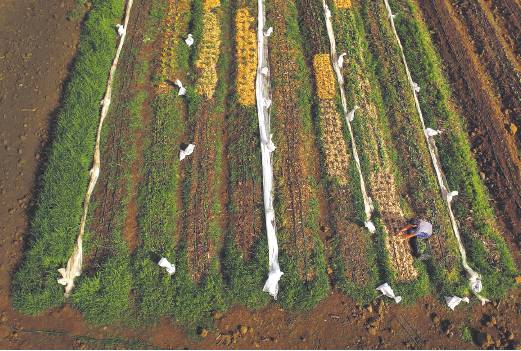Concern over loss of U.S. farmland
By Tara DugganThe United States is losing its best farmland to development, even as the country’s population booms, according to a new report from the nonprofit conservation organization American Farmland Trust.
It’s a familiar sight for anyone who grew up in many Bay Area suburbs: The rolling pastureland or local fruit farms that once were on the outskirts of town have been replaced by a housing development or strip mall.
According to the American Farmland Trust, the United States lost almost 31 million acres, or 3.2 percent of its total farmland, from 1992 to 2012. California, which is responsible for one-eighth of the country’s farm production, lost an estimated 1.3 million acres of agricultural land to development during the same time period as both the state and the U.S. population increased by 22 percent.
The disappearance of agricultural land has become a global concern because the United States contains more than 10 percent of the land on Earth that is suitable for farming, the report states.
“We’re looking at a future where our population is going to continue to expand, and we’re going to have more and more demands for food, fiber and energy,” said Ann Sorensen, research director at American Farmland Trust. “Then you throw that curve ball of climate change in the mix” — longer droughts and more severe weather and erosion — “and that’s why we are so concerned now.”
In the report, agricultural land is defined as nonfederal cropland, pastureland, rangeland and woodland used to support agriculture. To get the most complete image of how land is used, researchers analyzed a range of data sets, including from the U.S. Department of Agriculture’s National Resources Inventory and Census of Agriculture, as well as the U.S. Geological Survey, which uses satellite imagery.
The report also found that 11 million of the acres lost to development — almost the same land mass as the Central Valley — were considered prime farmland, or land with the best soil, water access and microclimates for intensive crop production.
In California, the researchers said, almost all of the 1.3 million acres of farmland that were developed went to either urbanization or commercial, industrial and high-density residential areas. That’s different from low-density residential development, where there might be one house in the middle of several acres of land that aren’t used for farming. Later this year, the organization will release another report that will focus on land use on a state and county level.
“We’ve lost far too many farms and ranches in the Bay Area and across the country,” said Matt Vander Sluis, deputy director of the Greenbelt Alliance in San Francisco, which advocates for protecting the Bay Area’s natural and agricultural lands. “Sprawl and development continue to threaten our local food economy and the natural value our farms and ranches provide.”
The Greenbelt Alliance estimates that 217,000 acres of agricultural land in the greater Bay Area have been lost to development in the past three decades. The Marin Agricultural Land Trust is one local organization that tries to counter that development by creating easements that have preserved more than 51,000 acres of county land for agricultural use.
As land prices go up, especially in California, some farmers have turned to innovative practices, like vertical farming, or taken advantage of new technologies to maximize yields on what land they have.
But as the population of U.S. farmers ages — in California, the average age is 60 years old, according to the USDA —there’s the additional worry that more land will be lost if farms aren’t passed on to the next generation.
“We need to think about the future, not haphazardly developing anymore,” Sorensen said. “We need to try to do a much better job in planning, and giving communities the resources they need to plan.”
Tara Duggan is a San Francisco Chronicle staff writer. Email: tduggan@sfchronicle.com Twitter: @taraduggan

